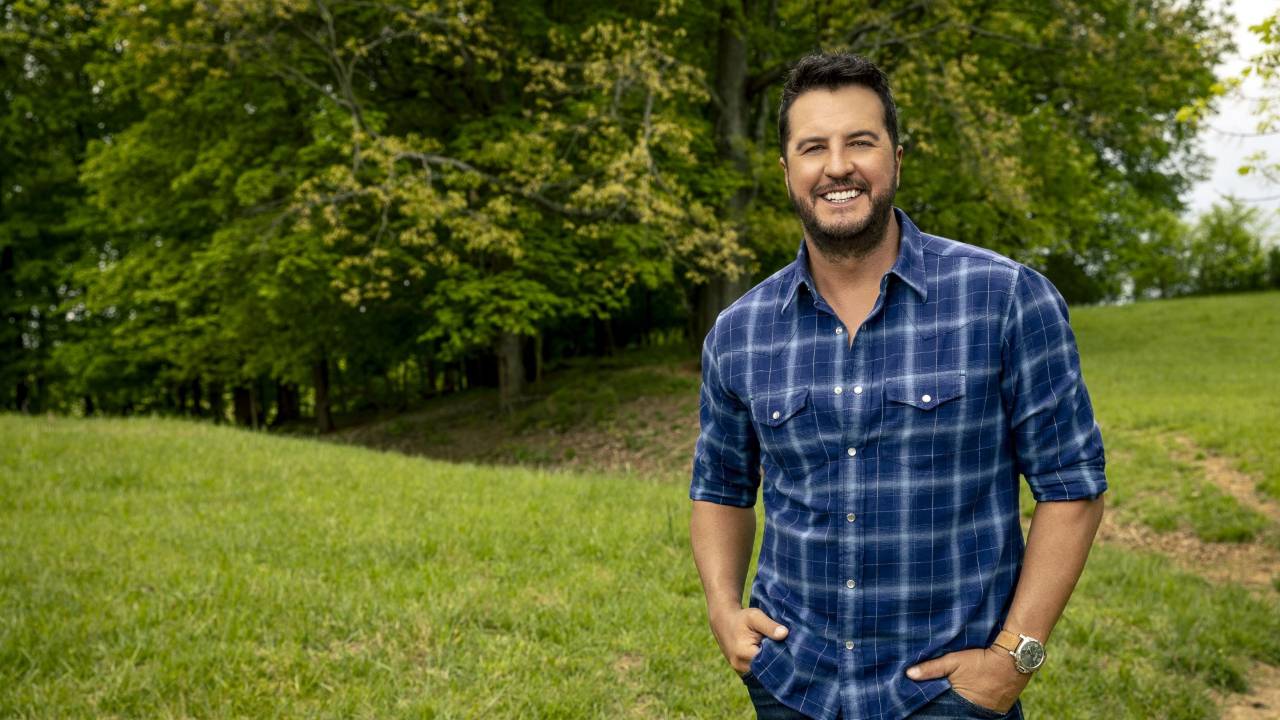Panel Reminisces About RCA's Studio B Hit Factory

RCA Studio B, a cornerstone in the development of Nashville's music industry, is celebrating its 50th anniversary, and the Country Music Hall of Fame and Museum recently launched the year-long celebration by gathering several music veterans with close ties to the famed recording facility.
Featured during the panel discussion at the Museum's Ford Theater were studio musician Harold Bradley (a 2006 inductee to the Country Music Hall of Fame), recording artist Jim Ed Brown (a founding member of the vocal group the Browns and currently a member of the Grand Ole Opry), music executive Jerry Bradley (a former head of RCA Records Nashville) and recording engineer Bill Harris (who worked at Studio B from 1974 until the label sold it in 1977).
John Rumble, the Hall of Fame's senior historian who moderated the event, called the studio "the birthplace of the Nashville Sound." After the studio opened in November 1957, the first major hit recorded there was Don Gibson's "Oh Lonesome Me," Rumble noted.
Harold Bradley began the discussion by explaining how the studio he and his older brother, producer Owen Bradley, built in 1955 on 16th Avenue South (now Music Square East) became the hub of what is now called Music Row.
Bradley said he and his brother, who was already working for Decca Records, agreed to build and staff the studio after Paul Cohen, the head of Decca's country division, threatened to move the operation to Dallas. Owen Bradley countered that he would put up $15,000 toward building a studio more to Cohen's liking if Decca would contribute an equal amount. Moreover, Owen Bradley offered to throw in Harold's labor for free. Cohen accepted.
"The [music] industry could have taken a different turn if we hadn't opened that studio," Bradley said. However, he continued, their studio used non-union engineers, but RCA wanted a union studio for their country artists. In addition, Steve Sholes, who headed RCA's country branch, had gained influence at the label after signing up-and-coming rocker Elvis Presley. This gave him the clout to insist that the label build its own Nashville recording unit.
Brown and Jerry Bradley agreed that Studio B had a different sound from other local studios. "It was a lot brighter and livelier," Bradley said. "It had more highs in it."
The Browns -- Jim Ed and sisters Maxine and Bonnie -- signed to RCA in 1955 and, Rumble noted, soon scored such hits as "I Take the Chance," "Just as Long as You Love Me" and "I Heard the Bluebirds Sing." But the three singers, who still worked out of their native Arkansas, were facing domestic obligations by 1959 and were thinking about quitting the music business. But their producer, Chet Atkins, talked them into cutting one more song at Studio B. It would become the biggest hit of their career.
"The music business was a hobby," Brown recalled. By 1959, the trio's momentum had been slowed down by his own stint in the military and by his sisters' marriages and pregnancies. To complicate matters, their father's health was declining. Jim Ed offered to take over the family's logging business.
For what was to have been their last session, Brown said, Atkins suggested the trio cut "The Three Bells," a lyrical story song that Brown had first sung with his high school choir in 1952. Their record became an instant hit, topping not only the country but also the pop chart.
"You kids may be thinking about retiring," Brown said Atkins told them, "but I don't think you'll be able to." Indeed, the Browns kept recording together until the late 1960s, by which time Jim Ed had started a parallel career as a solo artist.
"We never recorded but in one microphone," Brown says of the trio's Studio B sessions. "You can blend yourself much better than on separate microphones. Helen [Cornelius, his later singing partner] and I also recorded on one mike." He praised Atkins for having "a great ear."
Rumble inquired about Brown's recording of his 1967 signature tune, "Pop a Top," another of the hundreds of country standards cut in Studio B. Brown recalled, "Chet said, 'I've got an acetate [recording] from a guy down in Texas. Take it home and see if there's anything on it you like.'"
The "guy down in Texas" was Nat Stuckey, who was just then embarking on his own recording career. Brown listened to his demo and picked "Pop a Top" as the one song he wanted to cut. However, when RCA called Stuckey to hold the song, he said he was going to record and release it as his next single. "I prayed that his single wouldn't hit," Brown said. It didn't.
When it came time for Brown to record the song, his producer decided to begin the recording with the explosive sound of a pull-tab being opened. Brown said he and the producer initially planned to get a six-pack of beer for the job but then concluded the beer might become too warm to drink during the time it would take to get just the right sound. They opted instead for a carton of Dr Pepper.
They achieved the perfect sound with the first can they opened, Brown said, and then lamented that they had no beer with which to celebrate. Inspired by Brown's original recording, Alan Jackson later recorded the song and took it to the Top 10 in 1999.
Rumble reminded the audience that Roy Orbison had also cut songs at Studio B. He asked Harold Bradley to demonstrate the strum he had used in his introduction to Orbison's 1961 hit, "Runnin' Scared." Using the same rare Stromberg rhythm guitar he played on the actual session, Bradley strummed the stark, ominous chords. But when Rumble followed the demonstration by playing Orbison's recording, it was apparent that the strum Bradley remembered was markedly different from the one he did originally. "Well," he said by way of explanation, "it has been 40 years."
Presley recorded regularly at Studio B, and the piano he often used is still on display there. Rumble played a 1967 recording of Presley's "Indescribably Blue," a tune Bradley had suggested to him and on which Bradley employed a "baby Martin" guitar with gut strings. He bemoaned the fact that he later sold the guitar to Orbison.
Jerry Bradley then spoke of his 13 years with RCA and his personal experiences with Studio B. Bradley is most famous for conceiving Wanted! The Outlaws, the album of previously recorded songs by Waylon Jennings, Willie Nelson, Jessi Colter and Tompall Glaser. It became country music's first platinum-certified album.
Bradley said that Nelson (with his Red Headed Stranger album) and Colter (with her 1975 single, "I'm Not Lisa") had already established themselves as bestselling artists. "Waylon wasn't selling that many albums," he added, "maybe 150,000 or 200,000."
In an effort to jumpstart Jennings' sales, Bradley said, he decided to seize upon the outlaw theme and release a compilation album of Jennings' previous recordings that also included already available cuts from Nelson and Colter. Jennings' manager resisted, Bradley said, but ultimately relented when Bradley made it clear to him he had the legal right to the material and was determined to carry the project through. After that, Jennings insisted that Bradley include some of Glaser's recordings as well.
Glaser's lawyer, according to Bradley, opposed his client's participation in the album and dragged his feet on returning the necessary contacts.
"I called Tompall," Bradley added, "and I said 'I've got two covers over here. One's got your picture on it and one doesn't. If I don't have those papers in five minutes, I'm using the one that doesn't.'" The signed documents arrived shortly after.
It was Harris, the remaining panelist, who remixed all the cuts on Wanted! The Outlaws. Bradley said that he was so impressed by Harris' work on the project that he became his engineer of choice.
One of the most lauded songs on the album, "Good Hearted Woman" -- which stayed at No. 1 for three weeks in 1975 -- was presented on the album as a live Waylon and Willie duet. But it was neither live nor a duet. Using separate recordings, Harris merged the voices of Jennings and Nelson and then added canned applause to create the festive effect.
When the original studio became too small and ill equipped for RCA's increasingly sophisticated recording demands, the label built a larger studio. But Jerry Bradley said a new generation of artists wanted to record at studios of their own choosing -- in such congenial climes as Colorado and Alabama. They also wanted to use their own engineers rather than staff engineers. Consequently, RCA's country division quit the recording studio business in 1977.
After being owned for many years by Dan and Margaret Maddox, Studio B was purchased by the Mike Curb Family Foundation and made available to the Country Music Hall of Fame and Museum as a historic attraction and to Belmont College as a recording laboratory. Last year, Rumble said, more than 40,000 people toured the facility.
Additional programs commemorating Studio B's anniversary will be announced later this year.





